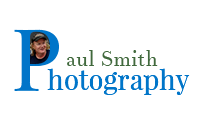Recently, I was asked a question by my niece that I’m sure a lot of young (or old) beginning photographers are thinking also. What is the best all around lens to buy for my digital camera (dslr) that would cover both wide and telephoto ranges? Keeping in mind that she is on a low budget and would prefer to only carry one lens around with her.
I explained to her that there is no silver bullet when choosing an all around lens for photography. Photography is a lot about compromise and needs. First you must determine what light you prefer to shoot in. Is it outdoors where there is lots of available light during the day or is it indoors where the light is diminished and colour balance changes because of other light sources. Maybe you like to shoot at sunrise or sunset when the angle of light creates that warm fuzzy feeling and evokes all sorts of emotions in your composition.
Besides determining what light you may do most of your work in, there is your subjects of choice. Do you like to shoot action shots of sports events, wildlife in flight or trains, planes and automobiles? Is portraiture something you like to shoot? What about landscapes or oceanscapes? Then there is the joy you receive in capturing the gleam in a spiders eyes as he devours his prey or the beautiful array of colours in a flower pistil and surrounding petals.
Starting to see the big picture? Basically it will be a case of what you need as opposed to what you want. If you’re like me and choose all of the above then you will need at the very least two lenses but probably three or four. If you have decided to focus on one or two areas of light and subject(s), you can get away with one lens maybe.
Wide angle lenses are faster because their light collecting ability increases whereas telephoto lenses are slower because the light collecting ability diminishes. In other words, the longer the focal length, the narrower the angle of view and the higher the magnification. The shorter the focal length, the wider the angle of view and the lower the magnification. Lenses that have varying ranges of focal length usually give up speed compared to single range lenses. For example, a 18-140 mm lens will only open up to an aperture of 3.5 whereas the 18 mm lens will open up to 1.4-2.8 depending on the manufacturer of the lens. The larger the focal length the smaller the opening of the aperture.
So you see that the simple question of what is the best all around lens doesn’t really have a simple answer. In the end I told her that her best bet would be to look for a second hand lens in the 18-140 mm range and expect to sacrifice a little quality in her photos by doing so. I also told her if she is serious about her photography and a possible career in it, she should start saving her money now to purchase some good quality single range lenses to compliment her varying range lenses.
All in all she was disappointed but grateful that she didn’t run out and buy the first lens she looked at.
